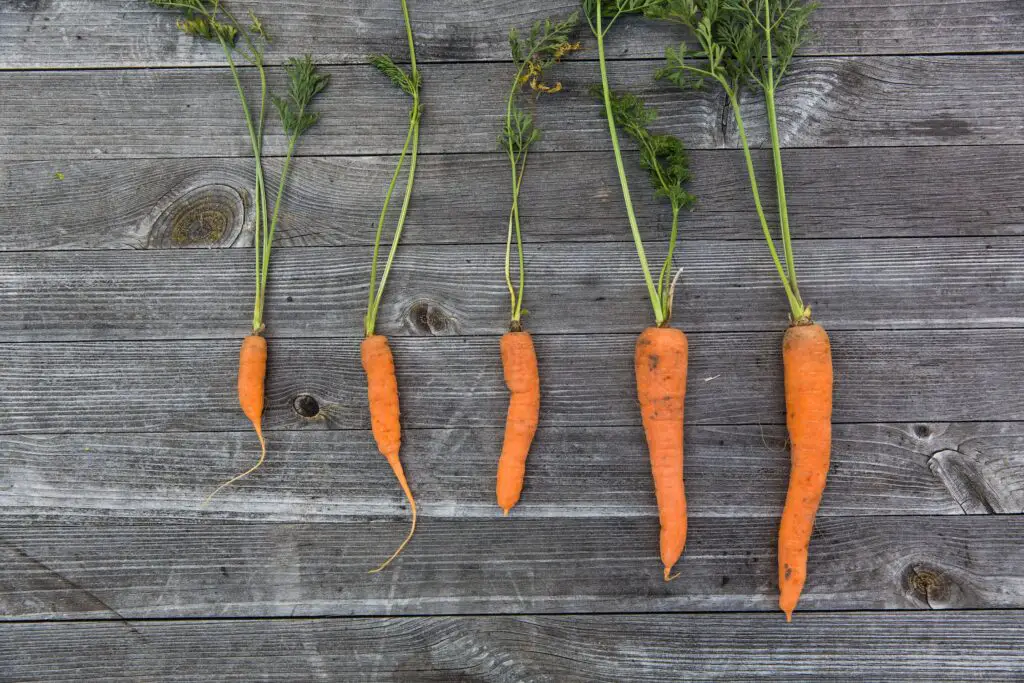Growing carrots indoors can be a fun and rewarding activity for gardeners of all skill levels. Not only is it a great way to produce fresh and healthy produce, but it can also provide a sense of accomplishment and satisfaction. With a few simple steps and the right equipment, you can grow your own carrots from the comfort of your own home.
Carrots are a root vegetable that are packed with nutrients and vitamins, making them a healthy addition to any diet. They are also easy to grow, making them a popular choice for many gardeners. While traditionally grown outdoors in a garden bed, it is possible to grow carrots indoors with the right conditions and care. In this article, we will take a look at the steps involved in growing carrots indoors, including the equipment needed, soil preparation, planting, care, and harvesting.
Table of Contents
Types of carrot to grow indoors
When it comes to growing carrots indoors, there are a variety of types to choose from. Here are a few of the best carrot varieties for indoor growing:
Nantes Carrots
Nantes carrots are a popular choice for indoor growing because they have a sweet flavour and are easy to grow. They have a cylindrical shape and are usually about 5-6 inches (12-15 centimetres) long. Nantes carrots are known for their crisp texture and bright orange colour.
Little Finger Carrots
Little Finger carrots are a small, slender variety that is perfect for indoor growing. They are only about 3-4 inches (7-10 centimetres) long and have a sweet, mild flavour. Little Finger carrots are ideal for snacking or for use in salads.
Paris Market Carrots
Paris Market carrots are a round variety that is easy to grow indoors. They have a slightly sweet flavour and are usually about 1-2 inches (2.5 – 5 centimetres) in diameter. Paris Market carrots are great for roasting or for use in stews and soups.
Cosmic Purple Carrots
Cosmic Purple carrots are a unique variety that are prized for their deep purple colour. They have a slightly spicy flavour and are about 6-7 inches (15-17 centimetres) long. Cosmic Purple carrots are a great choice for adding colour to salads and other dishes.
Danvers Carrots
Danvers carrots are a classic variety that has been around for over 100 years. They have a sweet, juicy flavour and are about 6-7 inches (15-17 centimetres) long. Danvers carrots are ideal for juicing or for use in soups and stews.
These are just a few of the many carrot varieties that can be grown indoors. When choosing a variety, consider factors such as size, flavour, and colour, as well as the conditions in your indoor growing space. With the right variety and care, you can enjoy a bountiful crop of delicious and nutritious carrots all year round.

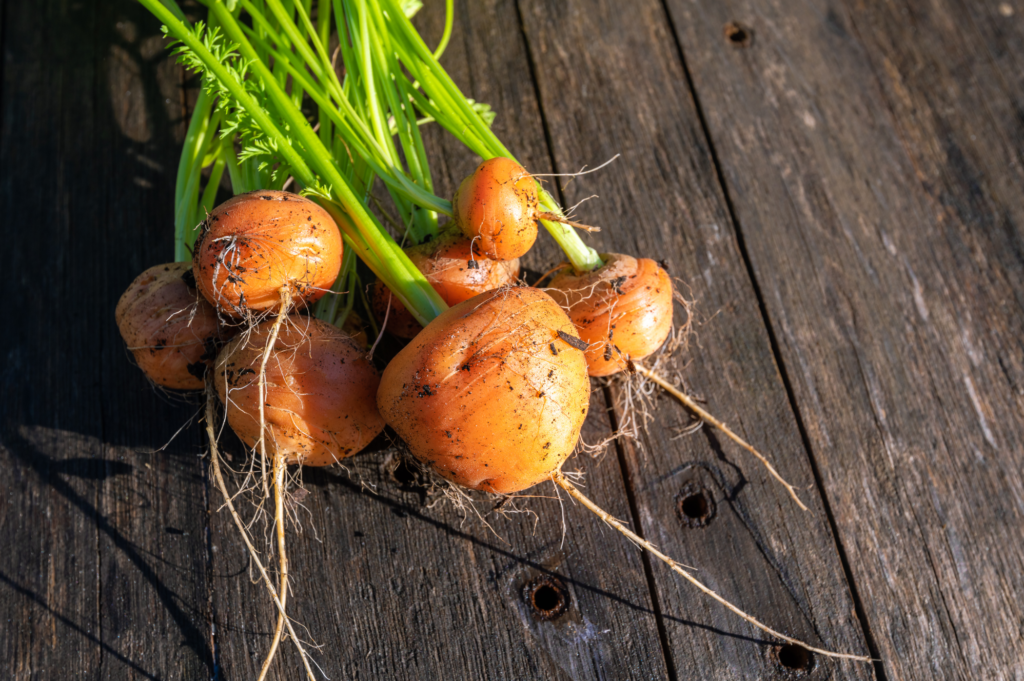
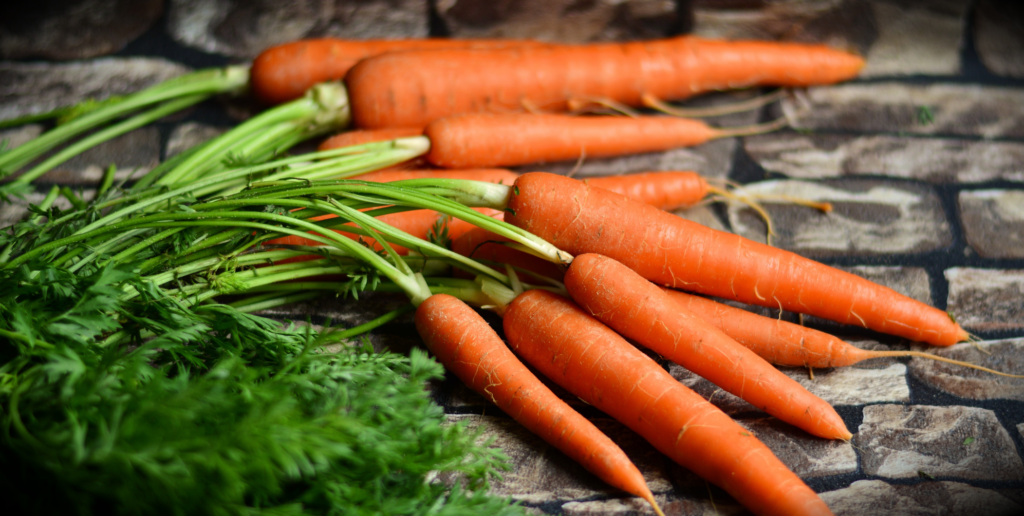

Equipment Needed for Growing Carrots Indoors
Before you start growing carrots indoors, it’s important to have the right equipment. Here are some items you will need:
- Containers – Carrots can be grown in a variety of containers such as pots, raised beds, or grow bags. The container should be at least 12 inches (30 centimetres) deep and wide enough to accommodate the number of carrots you want to grow.
- Soil – Choose a high-quality potting mix or make your own using a combination of vermiculite, peat moss, and perlite. The soil should be well-draining and free from rocks and debris.
- Seeds – Select a variety of carrot seeds that are suitable for indoor growing. Choose seeds that are fresh, as old seeds may not germinate.
- Light – Carrots need a minimum of 6 hours of sunlight per day to grow properly. If you don’t have access to natural sunlight, you can use artificial grow lights.
- Watering Can – A watering can with a fine nozzle is ideal for watering your carrot plants without disturbing the soil.
Soil Preparation for Growing Carrots Indoors
Preparing the soil for growing carrots indoors is an important step to ensure the success of your plants. Here are some tips to follow:
- Fill the container with soil – Fill the container with soil, leaving about 1-2 inches (2.5 – 5 centimetres) of space at the top. Make sure the soil is well-draining and free from rocks and debris.
- Fertilise the soil – Add a slow-release fertiliser to the soil to provide your plants with the nutrients they need to grow.
- Water the soil – Water the soil thoroughly to moisten it before planting your seeds.
Planting Carrots Indoors
Once your soil is prepared, it’s time to plant your carrot seeds. Here’s how:
- Create rows – Create rows in the soil by dragging a stick or pencil across the surface. The rows should be about 1/2 inch ( 1 centimetre) deep and spaced about 2 inches (5 centimetres) apart.
- Plant the seeds – Drop the carrot seeds into the rows, spacing them about 1 inch (2.5 centimetres) apart. Cover the seeds with a thin layer of soil.
- Water the seeds – Use a watering can to water the seeds gently. Be careful not to disturb the soil.
- Provide light – Place the container in a sunny spot or under grow lights. Carrots need at least 6 hours of sunlight per day to grow properly.
- Wait for germination – Carrot seeds typically germinate in 7-14 days. Keep the soil moist during this time.
Care for Growing Carrots Indoors
Taking care of your carrot plants is important to ensure they grow healthy and strong. Here are some tips to follow:
- Watering – Water your carrot plants regularly, keeping the soil moist but not waterlogged. Avoid letting the soil dry out completely, as this can cause the carrots to become stunted.
- Fertilisation – After your carrot seeds have sprouted, you can begin fertilising them. Use a balanced fertiliser with a ratio of 10-10-10 or 20-20-20. Apply the fertiliser according to the package instructions, being careful not to over-fertilise.
- Thin the seedlings – Once the seedlings have grown to about 1-2 inches (2.5 – 5 centimetres) tall, thin them out to allow enough space for each plant to grow properly. Remove any weak or spindly plants, leaving only the healthiest and strongest ones. Aim for a spacing of about 2-3 inches (5-7 centimetres) between each plant.
- Provide support – As your carrot plants grow taller, they may need support to prevent them from falling over. Use wooden stakes or bamboo canes to support the plants, tying them loosely to the stake or cane with garden twine.
- Pest control – Keep an eye out for pests such as aphids, spider mites, and carrot rust flies. Treat any infestations promptly with insecticidal soap or neem oil.
Harvesting Carrots Indoors
Once your carrot plants have reached maturity, it’s time to harvest them. Here’s how:
- Check for maturity – Carrots typically take between 70-80 days to reach maturity. Check the size of the carrots by gently digging around the base of the plant. If the carrots are about 1 inch (2.5 centimetres) in diameter or larger, they are ready to be harvested.
- Harvest the carrots – Gently pull the carrots out of the soil, being careful not to damage them. If the carrots are difficult to pull out, use a garden fork to loosen the soil around them.
- Clean the carrots – Remove any soil or debris from the carrots by gently brushing them or rinsing them under running water. Do not scrub them or use soap, as this can damage the skin.
- Store the carrots – Store the carrots in a cool, dry place such as a refrigerator or root cellar. They can be stored for several weeks to a few months, depending on the variety.
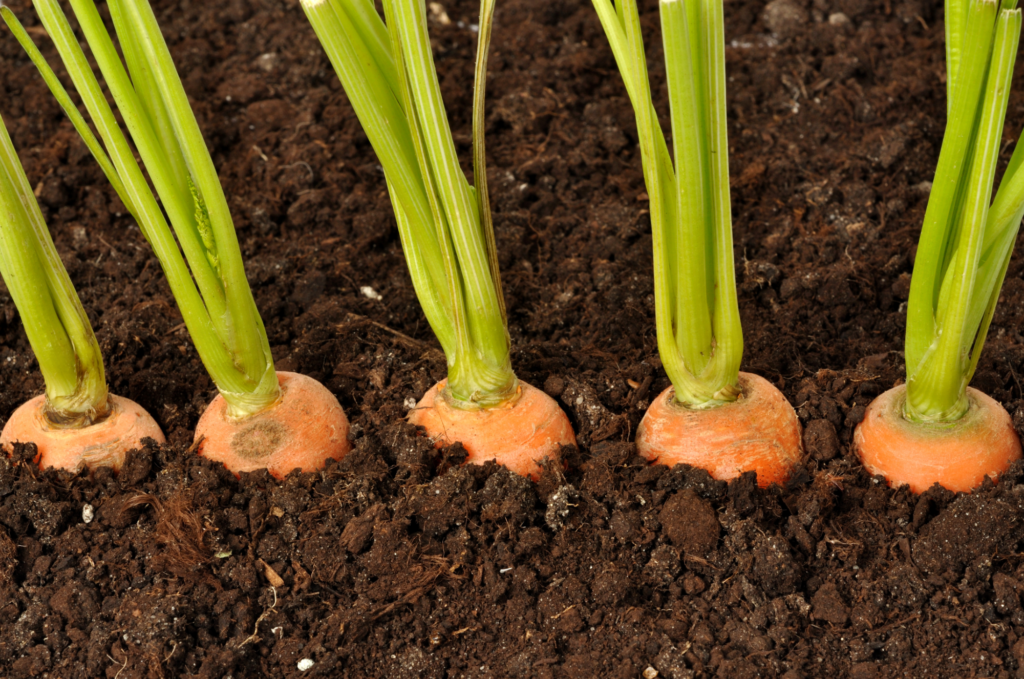
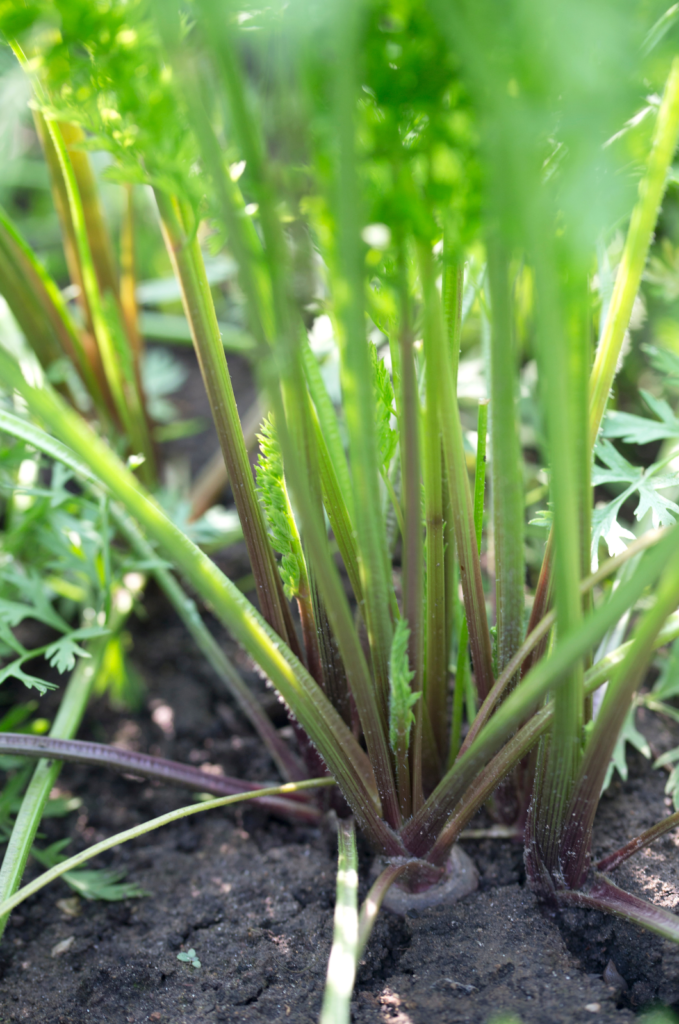
Conclusion
Growing carrots indoors can be a fun and rewarding activity that can provide you with fresh and healthy produce all year round. With the right equipment, soil preparation, planting, care, and harvesting, you can enjoy a bountiful crop of delicious and nutritious carrots. Whether you are an experienced gardener or a beginner, growing carrots indoors is a great way to connect with nature and enjoy the fruits of your labour. So why not give it a try and see how easy and enjoyable it can be?

